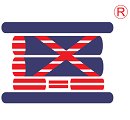Ejection system types
Ejection system types
l Pin ejection—Cylindrical pins eject the finished component. In the case of square and rectangular components, a minimum of four pins (at the four corners) are required. In the case of cylindrical components, three equidistant pins (i.e. 120° apart) are required. The number of pins required may vary based on the component profile, size and area of ejection. This ejection system leaves visible ejection marks on the finished component.
l Sleeve ejection—This type of ejection is preferred for (and limited to) cylindrical cores, where the core is fixed in the bottom plate. In this system, the ejection assembly consists of a sleeve that slides over the core and ejects the component. No visible ejection marks are apparent on the component.
l Stripper plate ejection—This ejection is preferred for components with larger areas. This system calls for an additional plate (stripper) between the core and cavity plates. To avoid flash, the stripper plate remains in contact with the cavity plate and a gap is maintained between the cavity and core plate. Visible ejection marks are usually not noted on components.
l Blade ejection—This type of ejection is preferred for thin, rectangular cross sections. Rectangular blades are inserted in cylindrical pins (or cylindrical pins are machined to rectangular cross sections) to create an appropriate ejection length for the component. For easy accommodation of the ejection pin head, a counter bore is provided in the ejection plates.
l By rotation of core (internal threaded components)—Used for threaded components, where the component is automatically ejected by rotating the core insert.
l Air ejection—Used to actuate the ejection pin fitted in the core using compressed air. The ejection pin is retracted using a spring.
MOBILE WEB

Company
NEWSLETTER
Sign up today for hints, tips and the latest product news - plus exclusive special offers.
subscription
We don’t do spam and Your mail id is very confidential.
